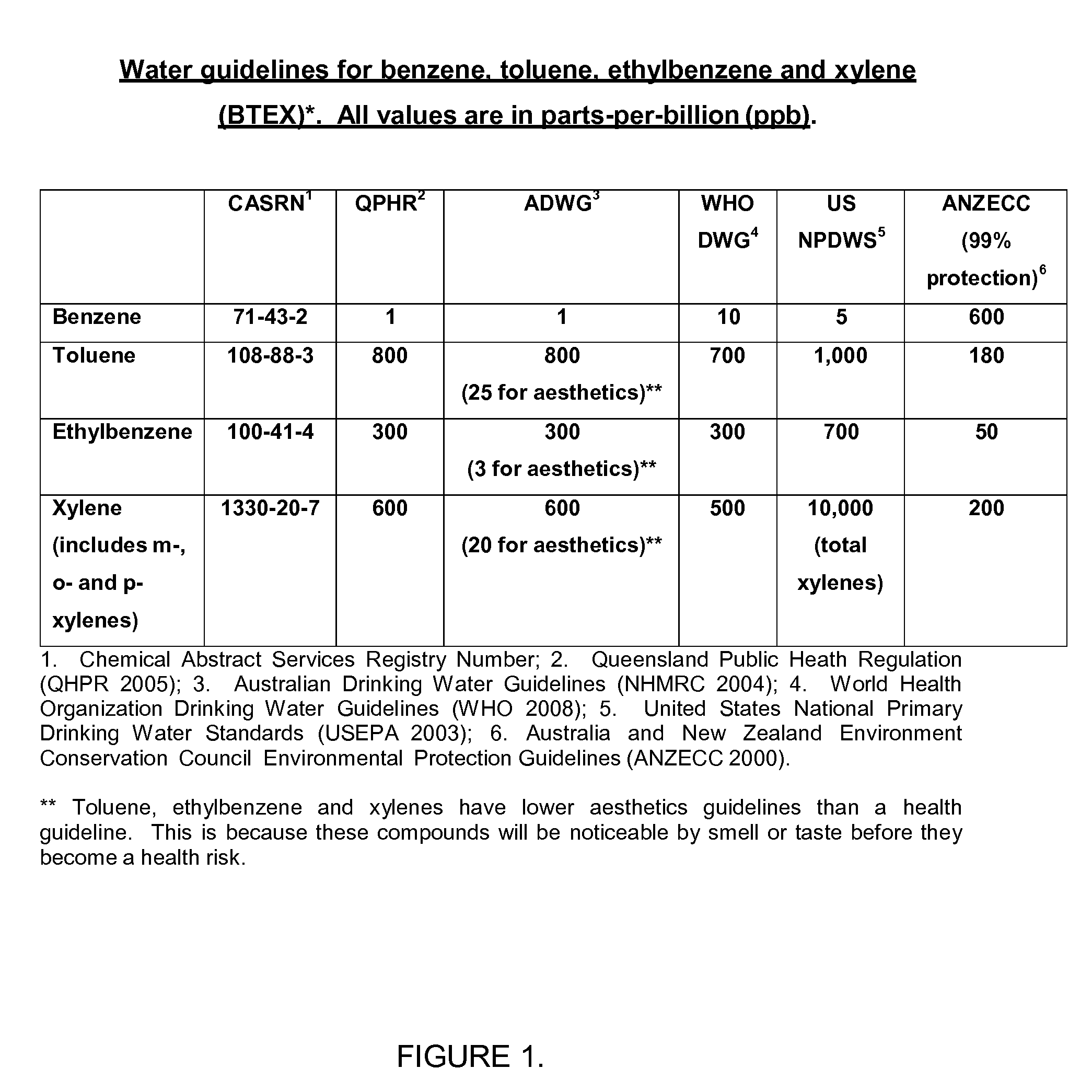Methods and Compositions for Hydrocarbon-Based Crosslinking Additives with Non-Detectable BTEX Levels
a crosslinking additive and hydrocarbon-based technology, applied in the direction of fluid removal, wellbore/well accessories, chemistry apparatus and processes, etc., can solve the problems of toxic via inhalation or ingestion, contamination of the environment,
- Summary
- Abstract
- Description
- Claims
- Application Information
AI Technical Summary
Benefits of technology
Problems solved by technology
Method used
Image
Examples
example 1
Preparation of a Low-BTEX Crosslinking Additive
[0054]A hydrotreated light distillate (229.0 mL; 46.23 wt. %; LVT®-200, available from Calumet Specialty Products Partners, L.P., Indianapolis, Ind.) is added to an appropriate mixing vessel, and 9.0 g (2.20 wt. %) of Claytone IMG-400 (available from Southern Clay Products, Gonzales, Tex.) is added while mixing. Propylene carbonate (1.0 mL; 0.29 wt. %) is then added, followed by 9.0 mL (2.25 wt %) of CST-7605D (available from Conlen Surfactant Technology, Conroe, Tex.) and dried ulexite (200.2 g.; 49.02 wt. %; obtained from the Bigadic region of Turkey, and having a D-50 of about 11 microns). The mixture is stirred until admixture is complete, and the solution is tested for BTEX levels using Method 8260B EPA, a gas chromatography / mass spectrometry (GC / MS) technique) to determine volatile organic compounds in the composition matrix (Table B). The BTEX levels for the individual oil and surfactant components are presented in Table C, below...
PUM
 Login to View More
Login to View More Abstract
Description
Claims
Application Information
 Login to View More
Login to View More - R&D
- Intellectual Property
- Life Sciences
- Materials
- Tech Scout
- Unparalleled Data Quality
- Higher Quality Content
- 60% Fewer Hallucinations
Browse by: Latest US Patents, China's latest patents, Technical Efficacy Thesaurus, Application Domain, Technology Topic, Popular Technical Reports.
© 2025 PatSnap. All rights reserved.Legal|Privacy policy|Modern Slavery Act Transparency Statement|Sitemap|About US| Contact US: help@patsnap.com

